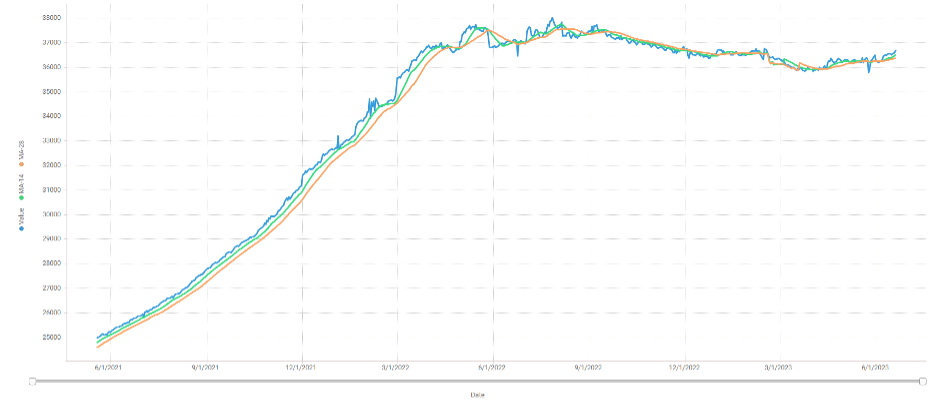Introduction:
In today’s ever-changing automotive market, one undeniable trend has emerged – the sustained increase in used car prices. While many factors contribute to this phenomenon, it is crucial to delve into the intricacies of supply and demand, the repercussions of Canada’s exporting practices, the impact of the COVID-19 pandemic, and the role of immigration. By understanding these dynamics, we can gain valuable insights into the future of the used car market and discern the reasons behind its continued rise.
Supply Disruptions and Exporting Practices:
Supply plays a pivotal role in determining the trajectory of used car prices. Over the past few years, Canada has witnessed a significant amount of exporting, primarily to the United States. Since 2014, hundreds of thousands of vehicles have left Canadian shores, creating a substantial imbalance in supply. However, what is often overlooked is that each vehicle exported from Canada typically changes hands multiple times before reaching its final destination.
On average, a vehicle undergoes ownership by up to four different individuals before it is decommissioned. This constant rotation of ownership further exacerbates the scarcity of available used cars in the Canadian market. Consequently, this scarcity directly translates into increased demand, which inevitably drives up prices.
Disruptions Amplified by the Pandemic:
The COVID-19 pandemic introduced unprecedented disruptions to the automotive industry. Manufacturing plants temporarily shut down, causing a significant reduction in production output. Furthermore, the shortage of semiconductors, essential components for modern vehicles, further hindered the production process. These disruptions created a ripple effect, amplifying the scarcity of used cars.
Of particular concern is the shortage of three-year-old vehicles, which make up the most desirable segment of the used car market. Due to the production hiatus and subsequent delays, there will be a notable deficit of three-year-old vehicles for the next three years. Consequently, the scarcity of these vehicles will continue to drive prices upward, potentially leading to a further imbalance between supply and demand.
The average listing price for used vehicles was consistent week-over-week, as the 14-day moving average was at roughly $36,475. Analysis is based on approximately 185,000 vehicles listed for sale on Canadian dealer lots. (source Canadian Black Book 06-20-23)
Record Immigration Levels:
In addition to supply and production disruptions, the influx of immigrants into Canada has surged to record levels. As newcomers settle into their new lives, one of the first priorities for many is acquiring a vehicle. This increased demand from immigrants, coupled with the pre-existing scarcity, further intensifies the upward pressure on used car prices.

Conclusion:
As we navigate the intricate web of factors contributing to the rising prices of used cars, it becomes abundantly clear that this trend is unlikely to reverse anytime soon. The interplay between supply disruptions, exporting practices, pandemic-induced manufacturing setbacks, and heightened immigration levels all point to a prolonged period of inflated prices in the used car market.
While this may pose challenges for buyers seeking affordable options, it also underscores the need for innovative solutions, such as exploring alternative transportation models or embracing emerging technologies. In the face of these market dynamics, it is essential to remain informed, adaptive, and open to new possibilities, ensuring that both consumers and industry stakeholders can navigate this shifting landscape with confidence.




No Comments